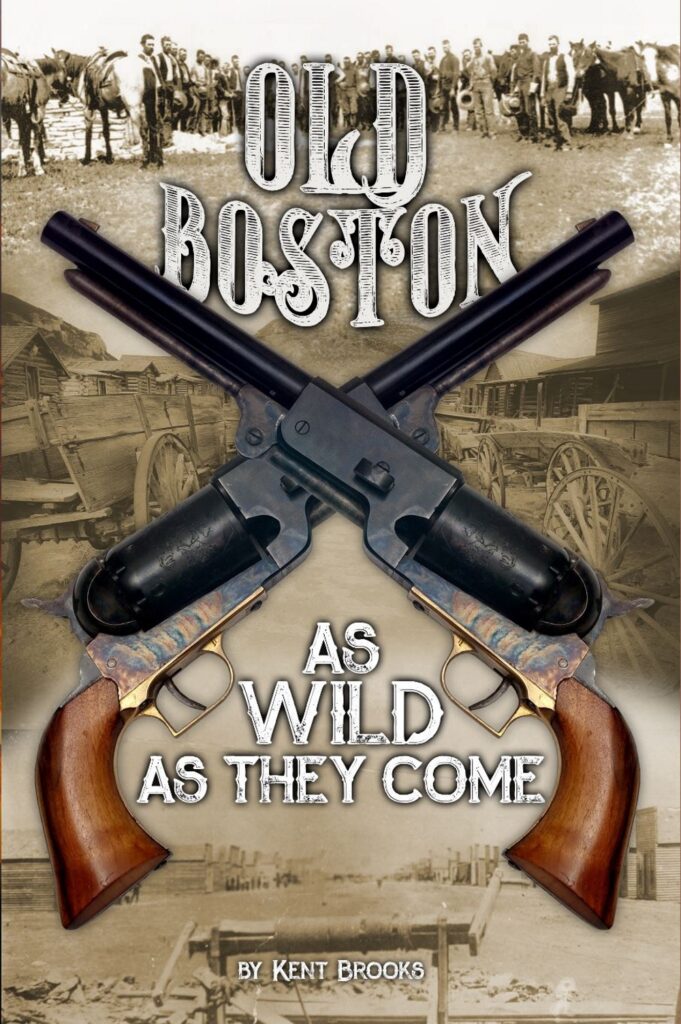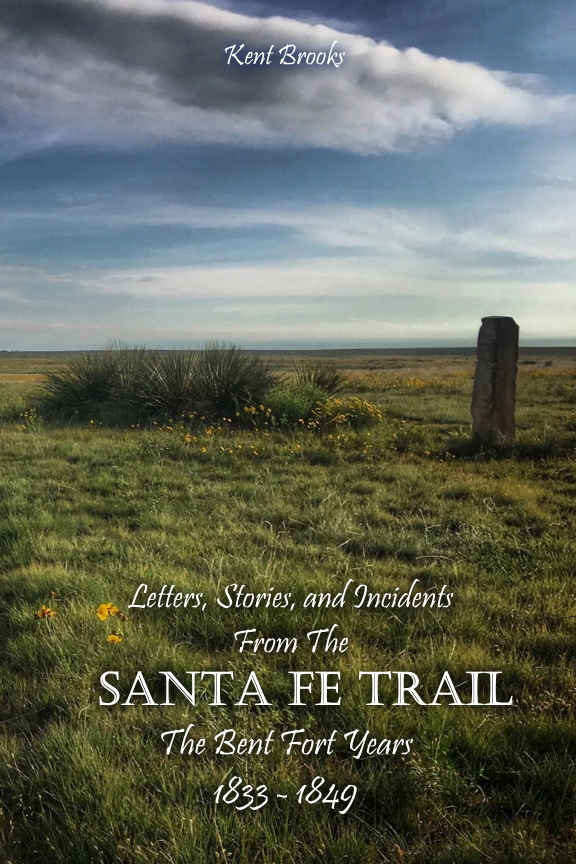by: Steven Doner and Kent Brooks
My introduction to Stevenson happened in 2010 when I was first shown the Lost 1894 Colorado Relief Map by James McConnell School Supplies of Denver, Colorado. Immediately, I began combing the bottom right corner for familiar names, but more so for unfamiliar items that might fuel my curiosity. Exploring McConnell’s version of Baca County was exciting for this map enthusiast, and it wasn’t long before I was rewarded, for in the area of the county I thought I knew best was the settlement of Stevenson. How could I not know or have at least heard something about this place after years of listening to and asking old timers, like my dad, about our area’s past.

Since most of the old timers are gone now, some consider me one, I turned to the only person I knew might have an answer, Ralph Bohl. He and I shared a love for past things, and he was my source for the “old stuff,” especially concerning Konantz area history. I write this 13 years after our discussion about Steveson, and sadly, he is now gone. Without him, exploring our area’s past is like groping in the dark for a light switch. When I asked Ralph about Stevenson, there was no quick answer, just a long pondering, which increased my anticipation. He finally mentioned that Roscoe Bryan had once told him about a guy who had tried to get a town started south of the Konantz area, before Konantz even, but without much success. Roscoe said the guy didn’t have much more than a windmill and a mailbox. That was all, he had nothing more to add, and I was forced to leave it at that. Except, I couldn’t! It was my search for more details on Stevenson that led to the discovery of the website:
https://history.denverlibrary.org/sites/history/files/Place_Names_of_Colorado.pdf and the entry-

However, that wasn’t much better than a dead end. There were no exact beginning and ending dates, no legal land description, or even a postmaster’s name, nothing other than a verification that a Post Office had been granted to a settlement named Stevenson in 1888. Then I remembered that the family of Jane Thompson had graciously given me one of her books: Colorado Post Offices 1859-1989 – A Comprehensive Listing of Post Offices, Stations and Branches, by William H. Bauer, James L. Ozment, and John H. Willard, published by The Colorado Railroad Museum, 1990. That book listed the dates of the Stevenson Post Office, 2/15/1888-10/30/1888, only seven and half months. Based on my knowledge of Baca County’s old towns, that seemed rather a short time frame for a Post Office to begin and then disappear.

The late 1880s in Baca County was a time of unbelievable growth and town speculation. There were several town companies with investors back East that vied for prime locations, all of them claiming and advertising that the future railroad was sure to pass through their fair hamlet and they would be preeminent. Many of those towns sprang up and then vanished in just a few years, but their post offices lived on much longer. Take for instance two of the more famous vanished towns: Boston which died because of a three day gun battle in 1889, but its post office commission lasted from 4/14/1887 – 6/16/1893, four years longer; and Minneapolis’ demise came in 1891, but its post office commission ran from 11/15/1886-11/15/1899, another eight years. Why was Stevenson’s commission so abbreviated?
So, if Stevenson’s Post Office commission ended in 1888, why was the settlement still drawn on the 1894 James McConnell School Supplies map? As a map maniac, it was only logical that I would examine other maps in an effort to find an answer. The first appearance that I could find of Stevenson in Baca County on a Colorado map was the 1889 Rand McNally map below:

It is not unusual to find several years elapse between the time a town or prospective town died and its disappearance from maps. For example, Stevenson arose and fell in 1888 but was still on maps 6 years later. Even though it was enjoyable to find Stevenson on another earlier map, there were no additional details available. After some searching I found Stevenson on another early map, the 1889 Cram map of Colorado.

Yet again, no more detail than confirmation that it once existed on Colorado maps in the late 1880s. Stevenson appears on no maps after the dates of the maps above, and in fact, seems to have been replaced with entries for Konantz, which was moved from Kansas to Colorado in Jan. of 1895. So, for me, that was all the information I could discover for over ten years, nothing but apparitions of a place called Stevenson right in my backyard!.
Then fast forward to this past Friday, August 18th, 2023 when searching for information on Konantz postmasters, I found in the governmental archives this document: Appointments of U. S. Postmasters, 1832-1971. While searching for early Baca County Post Offices and postmasters, I came across Stevenson and the first clue in over a decade, the name of the postmaster!! My pulse rate began to rise! This is the entry from the original documents:

This is an exploded version of the highlighted entry above:

Dis.(discontinued) / Stevenson / William Evans / 15 Feb. 1888 / Dis. Pu to Stonington/ 30 Oct. 1888
There it was for the first time, a name; William Evans. Eureka!!!! I had a name to go with the settlement and Post Office of Stevenson, William Evans. Having that name was like finding a gold nugget in the cuffs of your Levi’s. Now a new search could begin. I turned to the website that I have tattooed in my brain, – glorecords.blm.gov – and found these entries :


NOTE: Here is the text of the above image. I have provided the image to allow for the visual of the script text.
All of the full original documents are not available except for the original land patent issued to William Evans almost three years after his death. This is not unusual as the land patent reads: ……“William Evans and to his heirs…..” But there are also patents with William’s wife’s name, Leah Evans, in her heirs names, and evidently a daughter, Mary E., all on the same section of land or adjoining it, proving that she and her family stayed in the area for some time after William’s passing. I have not been able to trace down the names of their sons, but there are numerous Evans men who homesteaded further west of this location. However, that will have to be another trail to follow for another day, and like a good cow dog ignoring the running cottontail amongst the cows, I must resist the temptation to follow it now. All of the patents were purchased under the 1820 Land Act, meaning they paid cash for them instead of proving them up, except for the NE1/4 of sec. 14 and Lot/Tract 78 which were proved up under the 1873 Timber Culture Act. So, all in all the Evans family had patents on all of section 14, T31, R42 and some surrounding tracts of land.
Below is the original patent certificate # 2101 for William Evans, Las Animas County, Colorado for the NW1/4 of Sec. 14, T31, R42 issued on 4/16/1891.

Below is a 2023 Google Map showing the location of William Evans legal land patent. Somewhere within the borders of that quarter is where his dream of a settlement must have been.

Below is the top portion of the application Williams Evans submitted for the commission of the Stevenson Post Office on 12/1/1887. I wonder, if in an effort to sway the decisions in his favor, he named his post office after the assistant postmaster general, A. E. Stevenson?

Here is the full application:
Then to my great surprise, during a phone conversation with Kent Brooks on Saturday, the 19th, of August, 2023, ALL of the pieces to this amazing puzzle fell together. Kent had been at the end of this trail all along, waiting for me to catch up. He knew little of the mystery of Stevenson, but unbeknownst to me, was chasing the story about Rev. Evans’ considerable influence on the part of Minneapolis in the county seat fight between future Baca County towns. Amazingly, Kent had already compiled newspaper articles that answered all my questions and furnished the ending to the Strange Story of Stevenson and its rapid demise.
This article is from: The Wichita Weekly Journal (Wichita, Kansas) 6 Sep 1888. —
The Richfield Republican reports the following:
The body of Rev. Wm. Evans was brought here on Sunday last from Stevenson, Colo., and buried in Grand View Cemetery. Mr. Evans’ death was a sad one and somewhat tragic. He recently purchased some Texas cows which like the greater part of the Texas stock are wild and vicious. One of the cows had long sharp horns which it seems Mr. Evans feared might cause injury to somebody, and he attempted to draw the animal up to a wagon and tie her for the purpose of sawing off the horns. During the effort the animal plunged at and knocked him down and on his attempting to regain his feet made a second attack upon him and plunged the point of her horn into his neck severing the jugular vein. With the assistance of his two boys, who were with him, Mr. Evans started for and got into the house just in time to escape a third attack from the infuriated animal, which became exceedingly furious. He was cared for as well as could be but bled to death in a few minutes.
In his early life Mr. Evans apprenticed to the trade of welder and machinist, served his time, and continued in the business thirty-five years before he began preaching.- from The LeRoy Reporter (LeRoy, Kansas) 22 Sep 1888) and:
Mr. Evans was a Baptist minister and preached alternately at Boston, Vilas and Minneapolis. He was postmaster at Stevenson, some eight or ten miles north of Plymouth, Colo. He came from eastern Kansas to this country. He was a member of the A. O. U. W., a benevolent insurance association, from which his family will get $2,000. He left a wife and several children, some of them grown. He was about fifty years of age.
In the fight between the towns of the county for the county seat, Sam Konkel tells us it was a preacher named Evans that advocated for Minneapolis. In the March 29 1918, Springfield Democrat-Herald, Sam Konkel wrote,
“As a speaker the judge (Jennings of Boston) was without peer in the southwest, unless an exception be made in the case of preacher Evans, who lived somewhere in the neighborhood of present Konantz and whose sympathies by reason of his location were with Minneapolis – in the fight for the county seat. As an aside, as we shall not have occasion to again refer to Evans, it will suffice here to say that he was a speaker of the first water, and we believe a thoroughly upright man.
Living in the neighborhood of Minneapolis, he naturally cast his fortunes with that town, and had he lived no doubt would have wielded a strong influence in the fight for the county seat honors.
He was diplomatic and fearless in what he championed and in his public addresses along the lines of his convictions and the cause he championed.
On one occasion at Boston he bearded the lion [Judge Jennings] in his den in a speech favoring Minneapolis for the county seat — that speech made all those Bostonians sit up and take notice. (see excerpt)
We believe it was not more than a week or two after this that Evans was instantly killed by being hooked in the eye by a vicious cow.
When the news reached Boston of the fatality, it was Judge Jennings who said it was the best thing that could have happened to Boston which was a compliment in line with what the North said when Stonewall Jackson was accidentally killed by his own troops.“
History is a FASCINATING thing. The Strange Story of Stevenson sat silent for over a century, until a spark lit an historian’s curiosity, who then embarked on a thirteen year journey to satisfy that curiosity. All the while, another historian, following a totally different trail from another direction, had the final clues to the mystery. That one newspaper article, waiting 135 years, solved the mystery surrounding Stevenson’s rapid demise, and also uncovered this influential figure that, if he had lived, might have altered Baca County’s history and its county capital. But this strange story also points to an even more fascinating fact, that the fortunes of families, towns, and even counties can be altered by nothing more than a tragic tale involving a cow’s horn.
—————————————
The following newspaper clippings provide additional details about Rev. Evan’s life, his family, his preaching, and his passing.
Let’s see what else we can learn about the Minneapolis orator, the Reverend William Evans.
LeRoy Reporter (LeRoy, Kansas) 3 July, 1886.
Cherryvale Globe and Torch (Cherryvale, Kansas) 18 Mar, 1887.
Kansas People (Osage City, Kansas) 10 Aug, 1887.
The Western Baptist (Topeka, Kansas) 27 June, 1888.
Below are two references to Evans preaching at Vilas and Springfield less than a year before his death.


Colony Free Press (Colony, Kansas) 30 Aug, 1888. NOTE: This I believe is an error. Evans is reported to have lived in Stevenson, Colo. in all other references. I believed the editor of this paper just assumed it was Stevens County, Kansas.
The Leader-Democrat (Richfield, Kansas) 1 Sep, 1888.
Ingalls Union (Ingalls, Kansas) 6 Sep, 1888.
The LeRoy Reporter (LeRoy, Kansas) 22 Sep, 1888 reprinted this account from The Minneapolis, [Colo.] Republican:
Death of Rev. Wm. Evans – This entire community was startled on Saturday morning by news of the death of our pastor, which occurred at his home in Stevenson Thursday evening. He had recently bought a cow which proved to be vicious, and while tending her she attacked and gored him in the throat, severing the carotid artery. He had strength to run to the house, but bled to death almost instantly. He was in many respects a most remarkable man. In early life apprenticed to the trade of molder [welder] and machinist, he served his time, and continued in the business thirty-five years before he began preaching. Earnest, energetic, enterprising, he made his marks in the walks of life through which his way led him. He was an earnest christian and an able preacher, and was doing the Master’s work with all his will when called to serve him in a higher capacity. He leaves a wife, one daughter and four sons to mourn his loss. – Minneapolis [Colo.] Republican.
Garden City Sentinel (Garden City, Kansas) 6 Sep, 1888.
Wichita Star (Wichita Kansas) 4 Sep, 1888.
The Wichita Weekly Journal (Wichita, Kansas) 6 Sep, 1888.
The Burlington Democrat (Burlington, Kansas) 28 Sep, 1888.
Cherryvale Champion (Cherryvale, Kansas) 8 Sep, 1888.
Rev. Wm. Evans, was gored to death by a vicious cow Thursday of last week at his home in Stevenson. He was gored in the throat, the horn severing the carotid artery. Rev. Evans for years was an employee in the Missouri Pacific foundry, but since leaving here has been devoting his time to the ministry.
- The Parsons Weekly Eclipse (Parsons, Kansas) 4 Oct 1888.
Mrs. Evans, widow of the late Rev. Wm. Evans, well known in this city, came in from Colorado Saturday last and was the guest of the Rev. P. C. Brown and family over Sunday. She took the Gulf train Monday morning for Persons (Parsons?) where she will visit her son and collect the amount of $2,000 due her on a life insurance policy left her.
- Cherryvale Bulletin (Cherryvale, Kansas) · 3 Nov 1888
Mrs. Evans, widow of the late Rev. Wm Evans, of Colorado, Sundayed with Rev, P. C. Bowen and family, and on Monday went over to visit her son at Parson.
- The Weekly Clarion (Cherryvale, Kansas) 8 Nov 1888.
- Cherryvale Champion (Cherryvale, Kansas) 3 Nov 1888.
Colony Free Press (Colony, Kansas) · 18 Oct 1888


